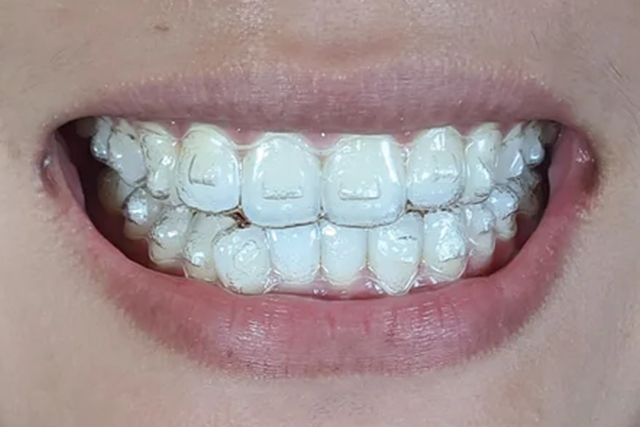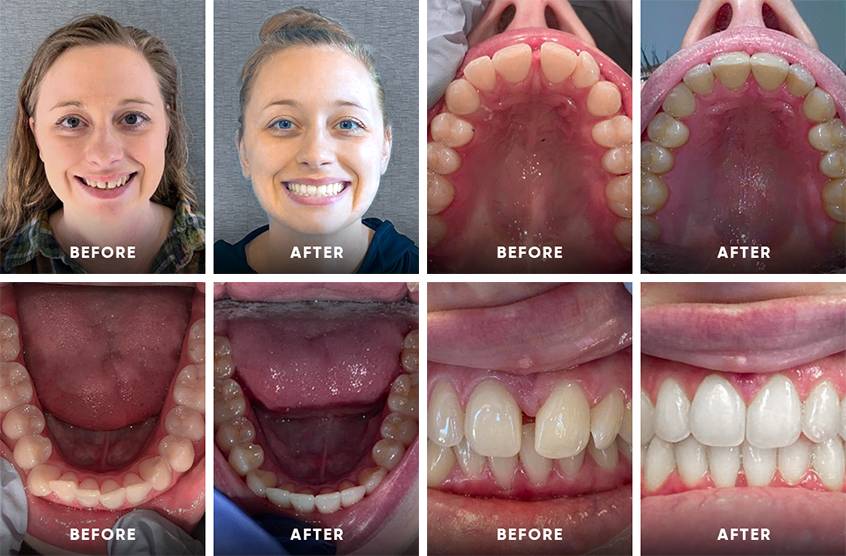The Price of Invisalign: Recognizing the Investment in Your Smile
Invisalign vs. Typical Dental braces: Which Option Is Right for You?
When thinking about orthodontic treatment, the choice between Invisalign and typical dental braces provides a number of essential factors that merit mindful analysis. Invisalign uses a discreet alternative with detachable aligners, while standard dental braces give an extra visible yet effective remedy for extreme misalignment.
Overview of Therapy Choices

On the other hand, traditional braces are composed of metal brackets and cords that are bonded to the teeth. This technique uses continuous pressure with time to achieve positioning. While reliable for complex orthodontic problems, typical braces require routine gos to for changes and can pose difficulties in keeping dental hygiene because of the trouble of cleaning around braces and cords.
Both alternatives have their advantages, and the selection frequently depends upon certain oral conditions, way of life choices, and client conformity. Ultimately, speaking with an orthodontic expert is critical for identifying one of the most suitable treatment plan customized to individual requirements. Recognizing the nuances of each alternative can substantially affect the overall success of orthodontic therapy.
Aesthetic Factors To Consider
A substantial aspect affecting the option between Invisalign and standard braces is the aesthetic appeal each therapy provides. Invisalign aligners are crafted from clear plastic, making them practically invisible when put on.
In comparison, traditional dental braces contain steel brackets and cords, which can be extra visible. While improvements in orthodontic technology have actually led to the growth of smaller braces and colored elastics, standard braces still preserve a more noticeable account. For some individuals, the presence of braces might deter them from looking for necessary therapy.
Ultimately, the option in between Invisalign and conventional dental braces may depend upon personal choices regarding aesthetics. Individuals that prioritize discernment often favor Invisalign, while those that are much less concerned regarding presence might opt for standard dental braces. Understanding the aesthetic effects of each alternative is essential for making an educated choice that aligns with one's way of life and choices.
Convenience and Convenience

In terms of benefit, Invisalign aligners are removable, making it possible for people to appreciate their favorite foods without restriction and keep ideal dental hygiene. Cleaning and flossing are simplified, as the aligners can be gotten throughout these regimens, whereas conventional braces call for cautious maneuvering around braces and cables.
In contrast, standard dental braces necessitate normal adjustments, making them less convenient for those with active routines. On the whole, the comfort and convenience of Invisalign make it an appealing selection for lots of people looking for orthodontic treatment.
Treatment Period and Efficiency
While both Invisalign and conventional dental braces are effective in remedying oral misalignments, the duration review of therapy can differ considerably between both options. Normally, Invisalign therapy can take anywhere from 12 to 18 months, depending upon the intricacy of the instance. The clear aligners work by gradually moving teeth right into their wanted placements, and regular follow-ups with an orthodontist help make sure progression continues to be on track.
In contrast, conventional braces commonly call for a longer dedication, generally varying from 18 months to three years. This is due to their fixed nature and making use of cables and brackets, which can be a lot more efficient for intricate instances and extreme imbalances (Invisalign). The treatment performance of typical braces is well-documented, as they permit for specific modifications and greater control over tooth motion
Ultimately, the selection in between Invisalign and standard braces might depend upon both the anticipated therapy period and the certain oral problems at hand. Consulting with an orthodontist is important, as they can offer tailored recommendations based upon specific requirements, making sure the chosen method straightens with preferred results and timeframes.
Expense Comparison and Insurance Policy Alternatives
Expense plays site web a significant duty in the decision-making procedure for individuals considering orthodontic therapy, whether going with Invisalign or conventional braces. Typically, the expense of Invisalign ranges from $3,000 to $8,000, while typical braces generally set you back between $2,000 and $6,000. Factors affecting these costs consist of the complexity of the instance, the duration of therapy, and geographical place.
Insurance protection can considerably influence out-of-pocket costs. Several dental insurance policy plans give partial protection for orthodontic therapies, however the specifics can differ widely. It is critical for clients to assess their insurance coverage to identify the level of coverage for either choice. Generally, standard dental braces may be a lot more frequently covered by insurance coverage strategies compared to Invisalign, which some insurance companies classify as a cosmetic procedure.
In addition, numerous orthodontic practices provide versatile settlement strategies, making both treatment choices extra accessible. Patients ought to ask regarding possible funding alternatives and discounts for in advance settlements. Reviewing the complete expense, consisting of insurance advantages and settlement strategies, is essential for making an informed decision that aligns with both aesthetic preferences and budget considerations.

Verdict
In recap, the selection in between Invisalign and standard dental braces pivots on several aspects, including aesthetic preferences, convenience, therapy period, and expense. Invisalign provides a discreet, removable option that facilitates dental health and dietary versatility, while traditional braces might be preferable for complicated dental concerns and usually come with a lower price check these guys out factor. Inevitably, consultation with an orthodontist is vital to assess specific conditions and establish one of the most suitable treatment alternative for accomplishing ideal dental placement.
When thinking about orthodontic treatment, the selection between Invisalign and traditional dental braces presents numerous crucial elements that warrant cautious assessment.Contrasting Invisalign and conventional dental braces exposes distinct therapy options for orthodontic improvement.While both Invisalign and conventional dental braces are efficient in correcting oral misalignments, the duration of treatment can differ substantially between the 2 options.Expense plays a substantial function in the decision-making procedure for individuals thinking about orthodontic treatment, whether choosing for Invisalign or typical braces.In recap, the selection between Invisalign and standard dental braces hinges on several factors, including visual choices, comfort, therapy period, and cost.